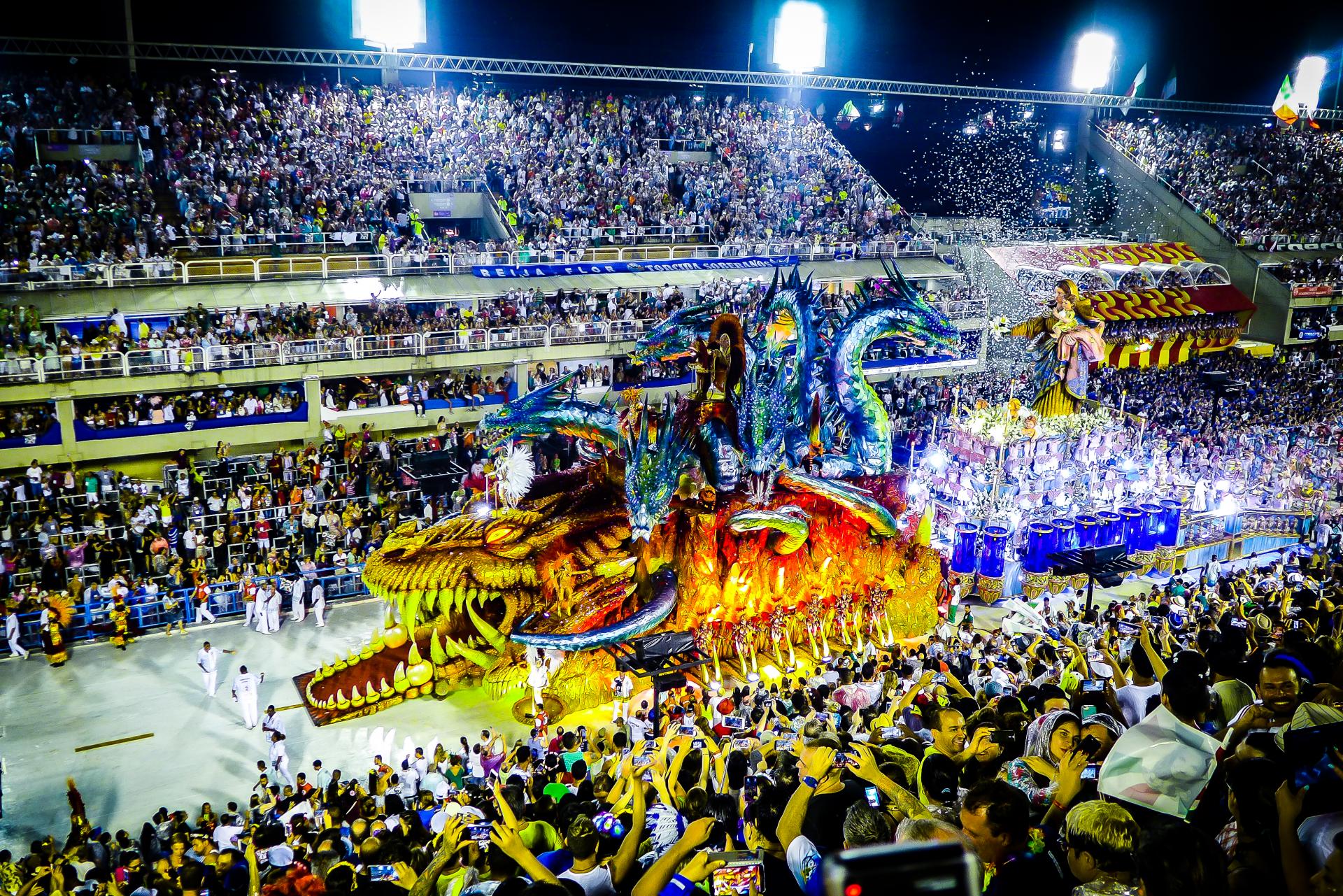Rhythmic Samba Enlivens Brazil's Streets

Documentary film shows the world of Samba
When you think of your vacation in Brazil, you might immediately see the pictures of the colorful carnival and the exuberant samba dances in front of you. Brazil is world-famous for its rhythmic dances and the combination of singing, dancing, and accompanying instruments simply captivates every audience.
If you would like to learn more about the fascinating art of samba, the documentary "O Samba" by Georges Gachot is highly recommended. On May 5, 2014, the film celebrated its premiere at the international film festival Festival cinema Bresilien in Paris.
The film history leads the visitor through the multifaceted world of Brazilian samba and introduces him to its true meaning - its lifestyle - and the expression of Brazilian culture. The Brazilian Martinho da Vila shows his samba school in Rio de Janeiro and looks back on stories from his 45-year career as a Brazilian singer and composer. This musical portrait about Brazilian culture is a must for all Brazilian fans and vacationers whose next trip will take them through Brazil.
Samba sounds in little Africa...
The Samba is, like pretty much everything in Brazil, a mixture of different cultures and influences. Samba has its origins in the African culture because the slaves who were deported to Brazil preserved their traditions by practicing the music style.
Classically the Samba is played with percussion instruments and accompanied by other instruments like the guitar or the ukulele. Often the lyrics tell about the daily life in the city and especially emphasize the daily routine of the destitute population.
In 1917 the first samba was recorded in Brazil, which was called Pelo Telefone. Born in Bahia, Tia Ciata soon moved to Rio de Janeiro, where she bought a small house in the Praça Onze. The square is still located in a neighborhood near the port of Rio de Janeiro. The region around the Praça Onze is also known as "Little Africa" since it was mainly Bahians with African roots who moved here and found their new home. During all this hustle and bustle, Tia Ciata, known for her culinary skills, opened the doors of her house so that regular meetings and sambar rounds were held here. This is how it came about that in one of these improvised rounds of samba, Pelo Telefone was created, which was particularly successful during the carnival in 1917. Soon after, the sounds of this dynamic musical style resounded in almost every house and especially on the streets of Brazil's major cities.
Carnival offers a stage for Samba
Samba is nowadays played and danced in almost all regions of the country, with the performance varying from place to place. The best known and most successful styles can be heard especially in Bahia, São Paulo, and Rio de Janeiro. Texts, rhythms, and instruments vary according to the samba style, which always results in varied dances.
The samba schools are particularly well represented in Rio de Janeiro and of course, they are given more attention during carnival time. Countless dancers fill the streets of the city with life and perform their rehearsed choreographies.
If you would like to experience the most famous carnival in the world up close and personal, then make this dream come true on the 6-day carnival travel module in Rio de Janeiro. During these six days, you will not only visit the famous landmarks of the city, like the Christ statue and the Sugar Loaf but also experience the exuberant street carnival. Marvel at the impressive costumes and get infected by the dynamics of the colorful hustle and bustle.
A day in honor of the Samba
If you want to follow the traces of the Samba even further back, a trip to the capital of the state of Bahia is particularly suitable. In Salvador, for example, Samba Day, which is celebrated on December 2, is celebrated with samba parades through the city. During the three-day trip to actively experience Salvador, you will get to know the capital of Bahia differently and explore the area by bicycle. Cycle along the port of Salvador and get an insight into a local social project. The project supports the homework supervision of children from the area and you have the opportunity to exchange ideas with the children and the project leaders. A visit to this colorful city is worthwhile and can be optimally combined with other travel components. We will be happy to advise you about the composition of your individual Brazil trip.
External source: historiadomundo.uol.com.br/

